At Whirl it is about bony elements that in their entirety represent the spine. They have an important function in the supporting and musculoskeletal system of the human body, provide the starting points for muscles and ligaments via their extensions and protect the spinal cord running in their spinal canal with their firm structure. In addition to injuries, degenerative changes for blockages or painful conditions in the area of the vertebrae are mainly caused by incorrect loading and / or wear.
What are vortices

As whirl the bony structures of the body are called, which in the totality of all elements represent the basic structure of the spine, in whose canal the spinal cord runs.
The human spine is made up of 32 to 34 of these basic elements and is divided into five sections based on the location of the vertebrae: Seven vertebrae (cervical vertebrae or Vertebrae cervicales: C1 to C7) form the cervical vertebrae, twelve vertebrae (thoracic vertebrae or Vertebrae thoracicae: Th to Th 12) the thoracic spine and five vertebrae (lumbar vertebrae or Vertebrae Lumbales: L1 to L5) the lumbar spine.
In addition, there are the five fused vertebrae (sacral vertebrae or vertebrae sacrales) of the sacrum and - individually designed in different ways - three to five vertebrae (tailbone or vertebrae coccygeae), which together form the coccyx and are only very rudimentary in humans.
Anatomy & structure
The largest part of the Vortex is the vertebral body (corpus vertebrae), which, due to its mass, takes on the actual supporting function of the spine.
The vertebral bodies have a base plate and a cover plate and are each separated by the intervertebral disc (also known as the intervertebral disc). The vertebral arch (arcus vertebrae) arises on the back of the vertebral bodies and forms the vertebral hole (foramen vertebrae) together with the body. All vertebral holes on top of each other result in the vertebral canal (Canalis vertebralis), in which the sensitive spinal cord runs and is protected all around.
Two intervertebral foramen (foramen intervertebralis) allow the spinal cord fibers to pass to the body structures to be supplied. Three processes arise from the vertebra - two transverse processes (processus transversus) and the spinous process (processus spinosus), which is usually well palpable on the back. The processes are mainly used for ligaments and muscles.
The first cervical vertebra, also known as the "atlas", has no spinous process. While the atlas is connected to the second cervical vertebra “Axis” via a so-called wheel joint, the other (not fused) vertebrae are connected to each other via four articular processes (processus articulares).
Function & tasks
The whirl assume important functions in the body - both in terms of the functionality of the support and movement system and the protection of the spinal cord.
By joining the individual basic elements together, they form the spine. Using special vertebral shapes, they ensure physiological curvatures of the spine and, in interaction with the intervertebral discs, enable effective absorption of shock loads. With their numerous articulated connections, the vertebrae enable a variety of stretching, bending and rotating movements, also in combination.
The vertebrae provide the necessary starting points for the muscles and ligaments through their appendages. The vertebrae also ensure that the individual body systems are supplied with fibers from the spinal cord: They protect the sensitive spinal nerves through their vertebral canal and direct them to the corresponding body structures via their own exit holes from the vertebrae.
You can find your medication here
➔ Medicines for back painIllnesses & ailments
The classic complaints in the field of whirl are due to injuries, wear and tear or illness:
- Comminuted fractures of the vertebrae as a result of external force (e.g. accidents or falls) with the risk of paraplegic syndrome in spinal cord injuries
- Osteoporosis of the vertebrae with increasing risk of vertebral fracture
- Wear reactions of the spine (osteochondrosis and spondylosis) due to long-term exposure
- Wear of the small vertebral joints (spondylarthrosis) with the result of the painful facet syndrome
- Narrowing of the spinal canal (spinal canal stenosis) due to wear and tear or tumors with the risk of sensorimotor disorders or paralysis due to the squeezing of the spinal cord
- Scheuermann's disease (juvenile kyphosis): The growing spine reacts to incorrect stress with the formation of wedge-shaped vertebrae and collapsing of the cover plates of the vertebral bodies and forms a painful hunchback.
- Slipping vertebrae (spondylolisthesis) due to instability of the spine
- Inflammation of the vertebral bodies (spondylitis) - for example due to bacterial infections or an underlying rheumatic disease
- Herniated disc: Here parts of the intervertebral disc penetrate the canal formed by the vertebrae, where they trigger symptoms such as tingling, paralysis or pain that are typical for the impairment of the spinal cord.

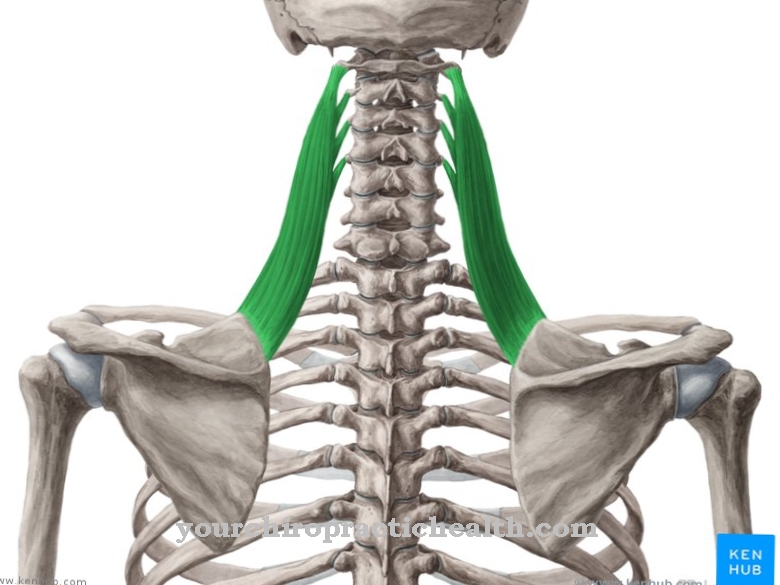
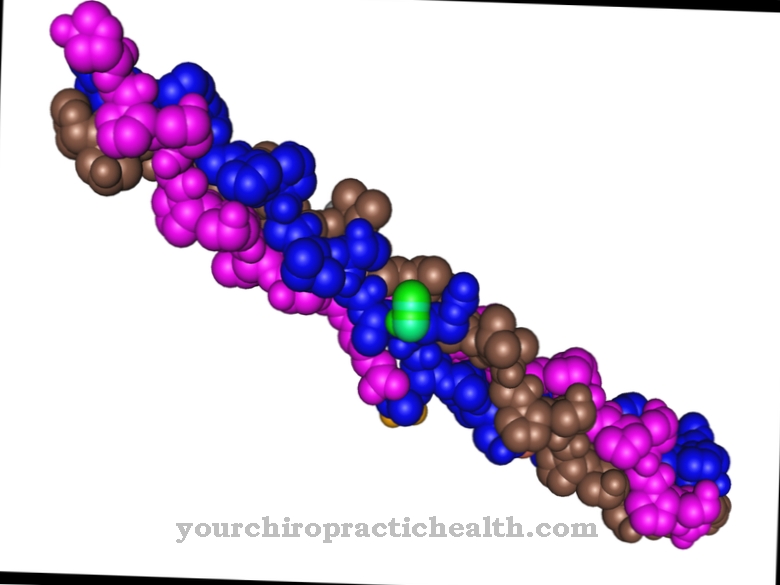
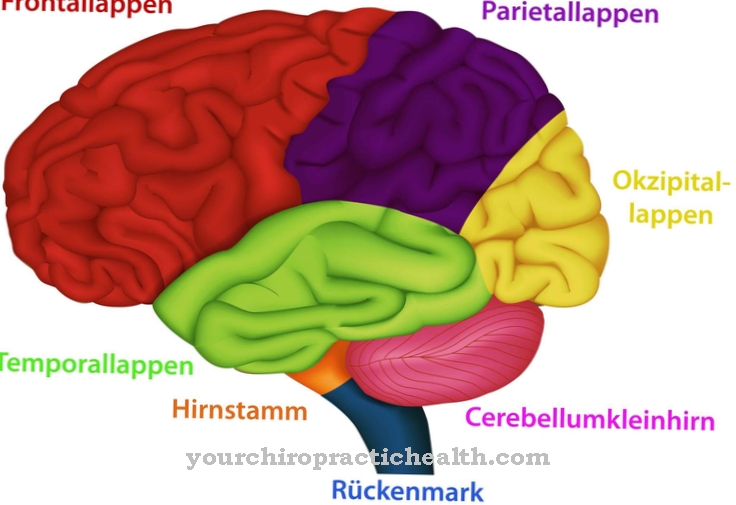

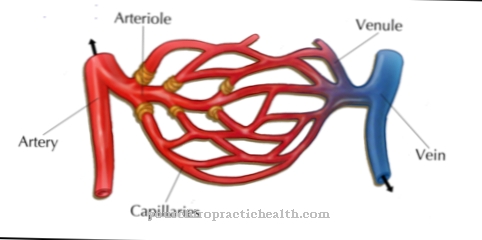
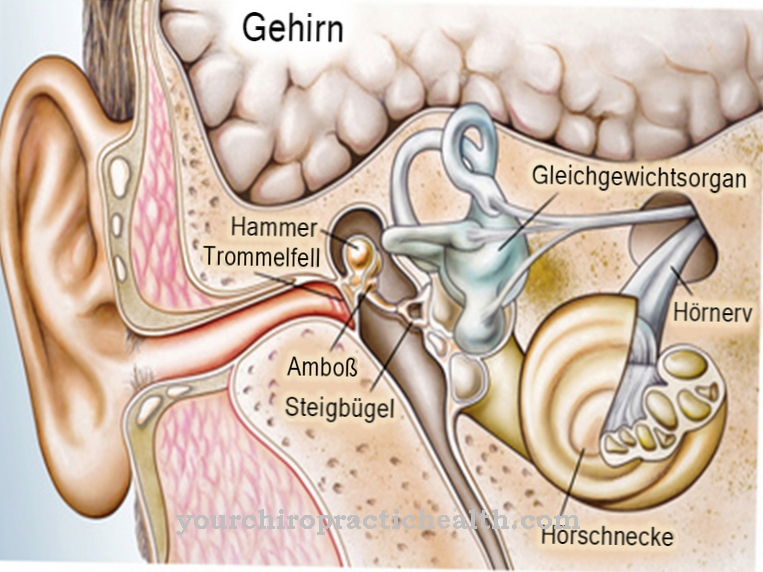

















.jpg)



